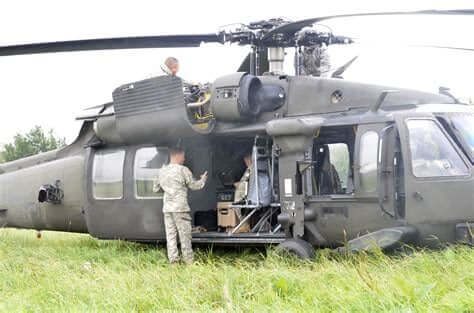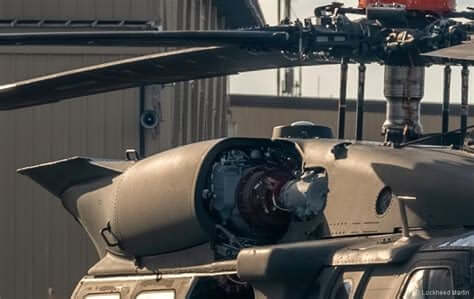"Walking Away From The Ledge” The Cut List: Vol. 19. These are the stories that didn’t make the cut to the final edit in my book. Some of these stories will jump around, but I’ll do my best not to leave you, the reader, guessing when and where they happened.
From a PC ride in 2013 to JRTC in 2015 after becoming a Maintenance Test Pilot (MTP). Want to know what happened in between? It’s in the book! Order links below.
JRTC is a tool to evaluate a unit’s deployment readiness. As it stands, a company typically only has to go once between deployment cycles, but having to go multiple times to this epic waste of time is unfathomable. I feel sorry for the multitudes who have gone more times than I have, and I have been there too many times to want to recall.
After planning eight or so air assaults and only flying three, the last one happened on the final night of operations in the box. Two aircraft were to fly in, pick up an assaulting unit, take them to an objective, drop them off for their mission, exfil them sometime later, drop them back off where they picked them up from, return to the airfield, shutdown, go to sleep, refit the following day in prep to go home, head back to Campbell the day after that. Easy enough.
After the aircraft landed to pick up the soldiers for the assault, loaded them up, ensured they were secure, and took off, the lead aircraft took a trash bag into the right-side engine inlet. I’m not talking about a Walmart shopping bag that was then reused for a small trash bag. No, it was one of those extra-thick bags that could hold an entire lawn full of leaves in one trash bag-sized bag.
It completely blocked the air coming into the inlet, causing a compressor stall as the compressor attempted to shred the trash bag into tiny plastic fragments and further push them into the engine. The crew landed safely, but with no other aircraft available for backup, they had to scrap the mission.
 Once safely landed and shut down, the crew loaded up on the second aircraft and headed back to the airfield. Early the next morning, I had to brief the TF CO on the steps I was prepared to take to repair the aircraft, make it flight-ready, return it to the airfield, and get it flyable for the trip back home the following day.
Once safely landed and shut down, the crew loaded up on the second aircraft and headed back to the airfield. Early the next morning, I had to brief the TF CO on the steps I was prepared to take to repair the aircraft, make it flight-ready, return it to the airfield, and get it flyable for the trip back home the following day.
I calculated all the data on the Performance Planning Card (PPC), wrote up Risk Common Operational Picture (RCOP, risk assessment by other normal words), and went to present it to the Task Force Commander, a Leuitenant Colonel (LTC), who was a Battalion Commander for the Kiowa unit that was due to be disbanded after this JRTC rotation. This was their final “Hoorah,” as it were. I handed him the paperwork and began explaining what had happened, but he cut me short as he already knew, of course.
I began to explain what I would do to check the engine prior to starting, during the run-up, and what I would do if it failed the Health Indicator Test (HIT check). It determines if an engine is running optimally. I informed him that at our altitude and air temperature, I would be able to fly the aircraft with minimal crew on one engine, and as I was explaining all the details to him, he cut me off one more time and said, “Yeah, yeah, yeah. We fly around here all the time with one engine. Go get your bird out there and do whatever you need to get it ready for the trip home. Fly safe!” He signed the papers and sent me on my way. I thought I would have to lay out every little detail, but he just signed the papers and said, “Go.”
The paperwork and an LTC were the least of my problems. We went out to the aircraft, conducted a thorough preflight, and removed as much plastic as we could see from the inlet using a borescope and an extended claw tool. Time to fire it up.
I started the good engine first with no issues, and then the right engine. It started up just fine, but seemed to run a tad hot. No surprise there. Time for the HIT check. It failed the first check by five degrees. If at first you don’t succeed, try again. I waited a few minutes; maybe that would help pull through or burn off any extra plastic. HIT again. Fail, by three this time. I waited about five more minutes and HIT it one more time.
I couldn’t believe it had passed, but just barely. Oh well, a pass is a pass and good to fly! We finished the run-up, took off, and headed over to North Fort Polk Airfield to flush the engine. I had a friend who was stationed there at the time, so I reached out to him for some pizza, which he was more than happy to bring, allowing us to catch up.
We land at the airfield, taxi over to the wash rack, and set up to flush the engine. As we ate pizza and chatted, I threw a headset at my buddy and began discussing the finer points of a Blackhawk, including what all the displays on the dash meant, as well as some of the more boring aspects of learning to fly and being in maintenance now.
It was all new to him, so he ate it up for a bit, but then he had to get back to work. We thanked him for the pie and got back to work ourselves. Flushing the engine only gave us a sandwich bag size more of plastic out to the engine itself, but I had hoped that would be enough to get a better HIT check score. 
Nope. It passed, but just barely. Good enough to get us home at least. After putting the engine back together, returning our gear, and submitting a jacked-up flight plan to flight ops to get us back to the airfield, we headed that way with a quickness!
It was one of those days where we were one bird strike, or something stupid like that, away from being on a “Flight Fax.” Flight Fax is published monthly and provides a brief account of a flight gone wrong, not always resulting in a fatality. It’s usually a paragraph long explaining the quick facts of a flight that had some incident, and I was waiting for the lightning bolt to strike.
We had all sorts of minor onion layers against us. We were almost out of duty day, I hadn’t been briefed for a night flight, and we were going to be landing minutes after sunset. My weather brief was BS, but since I knew it was going to be fine the whole way, I went with it. The flight plan was made up, but flight ops approved it. We didn’t have the torque wrench or anti-seize for the engine ignitors. I’m sure there was something else in there, but I kept waiting to get destroyed, but it never came. I told the PI that we got lucky on it and how to have a better plan for next time. No Flight Fax for us today, thank God.
Want to know more about some of these situations? You’ll have to get the book “Walking Away From The Ledge" for more details (links below)! If this story hit home—or reminded you of your own service—drop a comment below or share it with someone who might need it.
https://books.by/w-brand-publishing/walking-away-from-the-ledge



